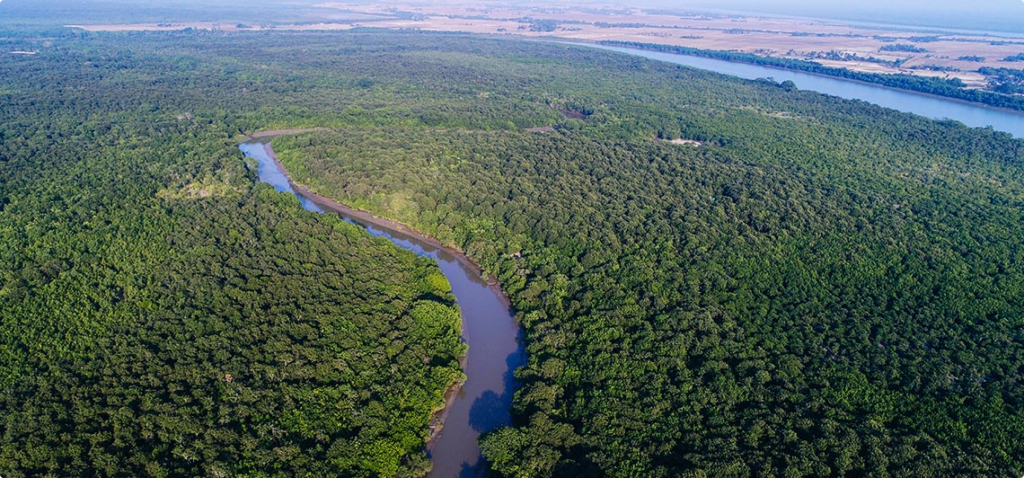֍ Bhitarkanika National Park is located in Kendrapara district of Odisha.
֍ It lies in the estuarine region of Brahmani- Baitarani rivers.

֍ The Gahirmatha Beach and Marine Sanctuary lies to the east, and separates swamp region cover with canopy of mangroves from the Bay of Bengal.
֍ It was designated a national park in 1998 and a Ramsar site in 2002.
֍ The national park is home to Saltwater crocodile (Crocodylus porosus). Saltwater crocodiles, or estuarine crocodiles, are enormous creatures and the world’s largest living reptiles.
֍ It is the second largest mangrove ecosystem in India.
֍ The Gahirmatha Beach which forms the boundary of the park in the east is the largest colony of the Olive Ridley Sea Turtles.
֍ The landscape contains varied environments, including mangrove swamps, rivers, creeks, estuaries, marshes, inland floodplains, forested beaches, and mudflats.
֍ Rivers flowing through Bhitarkanika : Brahmani, Baitarani, Dhamra and Pathsala.
֍ Flora : Mangrove species, casuarinas, and grasses like the indigo bush.
֍ Fauna : The Sanctuary comprising Mangrove Forests meandering rivers, innumerable criss-crossed tidal inundated creeks provide last refuge to the already endangered salt water Crocodile. These Mangrove forests are good habitat for King Cobra, Indian Python , Water Monitor Lizard , black ibis, darters , wild boar, rhesus monkey and chital.
֍ Avifauna : The sanctuary has 215 species of birds in which the most important are the eight varieties of kingfisher and the migratory birds from Europe and Central Asia.
PRACTICE QUESTIONS
QUES . Two important rivers — one with its source in Jharkhand (and known by a different name in Odisha), and another, with its source in Odisha — merge at a place only a short distance from the coast of Bay of Bengal before flowing into the sea. This is an important site of wildlife and biodiversity and a protected area.
Which one of the following could be this? UPSC 2011
(a) Bhitarkanika
(b) Chandipur-on-sea
(c) Gopalpur-on-sea
(d) Simlipal
Ans (a)
